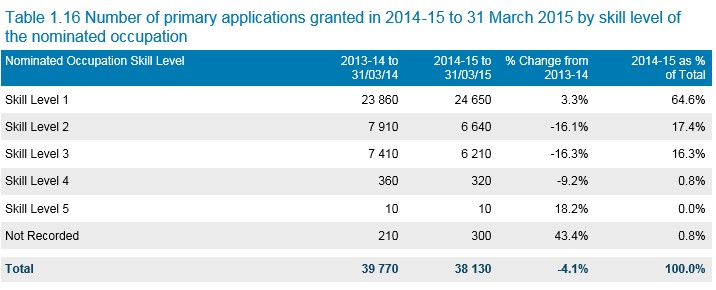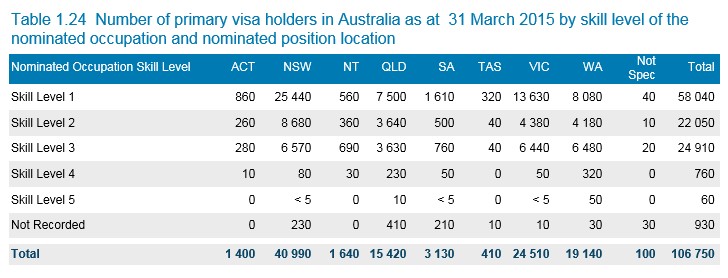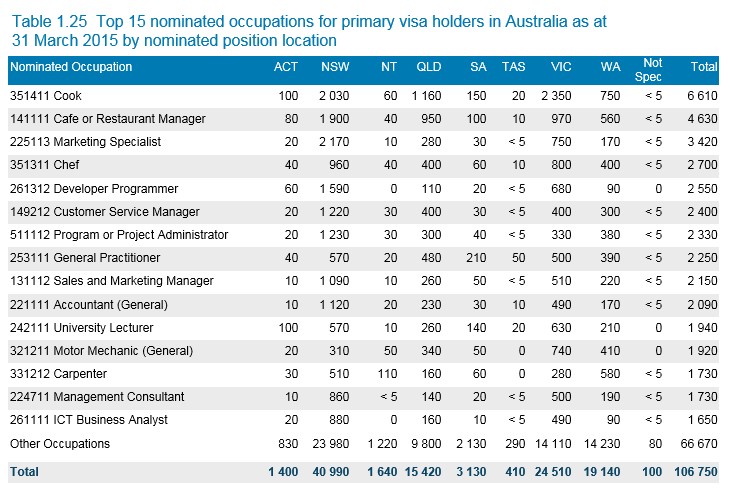Australia’s business lobby sure are a pack of whingers. After the Labor Party offered the sensible proposal to raise the minimum wage of workers brought in on 457 visas from the current fixed $53,500 annualised minimum salary to $57,000 (indexed), in a bid to reach a compromise on the China-Australia Free Trade Agreement, the business lobby has screamed bloody outrage. From The Australian:
Immigration Department figures obtained by The Australian show that, of the 13,239 visas granted under the 457 category to the end of September, 3581 fell below the proposed $57,000 threshold, equivalent to 27 per cent of all visas granted.
Of those, 581 or 4.4 per cent of the 457 visas granted were right on the current threshold of $53,900.
Under the 457 visa program industries that have a shortage of skilled workers in particular job categories must pay workers they bring into the country a minimum of $53,900 to prevent the scheme eroding general wage rates. Industries that pay less than the threshold are not allowed to seek foreign workers using the scheme.
Australian Chamber of Commerce and Industry employment director Jenny Lambert said raising the Temporary Skilled Migration Income Threshold (TSMIT) to $57,000 would have a “profound impact on rural and regional areas’’.
“What they (Labor) have put forward on the TSMIT is very concerning and the government should reject it out of hand,’’ Ms Lambert said…
“When you fiddle with it, it affects those businesses profoundly,’’ Ms Lambert said.
Let’s get a few things straight.
First, the average full-time salary in Australia was $80,283 as at May 2015, according to the ABS. Labor’s proposed minimum 457 salary falls $23,283 (29%) below this level.
Given that the 457 visa system is intended to apply to “skilled” workers only, how is Labor’s proposal inappropriate? If anything, it remains too low and is one of the reasons why businesses have been employing temporary foreign workers en masse, rather than employing and training locals.
Second, the 457 visa system is intended be used by employers in areas of skills shortages – i.e. to fill genuine labour market gaps. However, the Department of Employment’s latest skills shortages report proved convincingly that skills shortages across Australia have all but vanished, with “more than enough applicants with relevant qualifications, or appropriate skills and experience, for vacancies in almost every occupation”. It also noted that “in 2014-15, there was an average of 13.6 applicants for each skilled vacancy (15.8 for professions and 12.1 for technicians and trades), of whom an average of 2.2 were considered by employers to be suitable”.
Given that skills shortages are yesterday’s problem, why are 457 visas still being handed-out like candy? As shown in the below table, there were 38,130 primary 457 visas handed-out in the nine months to March 2015:

Moreover, there were 106,750 primary 457 visa workers residing in Australia as at March 2015 (add secondary 457 visa holders and the number totals roughly 200,000):

Around 80% of these workers – i.e. those working under the skill level 1 (so-called “Managers and Professionals”) and skill level 2 (so-called “Associate Professionals”) are not subject to labour market testing to determine whether an Australian can do the job first.
To make matters worse, the overwhelming majority of 457 visas are not going to workers in remote regional communities, but rather big cities like Sydney and Melbourne. Many are also working in professions that are not consider to be particularly “skilled”, in short supply, or critical to the economy, such as cooks/chefs, cafe/restaurant staff, and call centre/customer service (see next table).

Other occupations, like accountants, are already in massive oversupply.
Rather than relieving genuine skills shortages, which are next to non-existent nowadays, the whole 457 visa system has become a rort.
Exemptions from labour market testing have grown from around 20% initially to the outrageous level of around 80% currently.
Exemptions were originally to be granted for clearly defined skills shortages as identified by the then DEEWR (now Department of Employment), such as for doctors in rural areas and for short term skill-specific undertakings (e.g: Asian chef’s for expo’s, etc). Instead we now have Australia’s pubs importing kitchen hands on 457’s in significant numbers with government approval. Virtually all of these jobs could be filled locally with a little bit of training.
Instead of decrying Labor’s modest proposed change to the 457 minimum salary, how about Australian businesses actually concentrate on employing locals? With labour underutilsation tracking at over 14%, and skills shortages almost non-existent, there is more than enough labour available. All it requires is a little bit of training – something employers used to do before the immigration quick fix came along.

